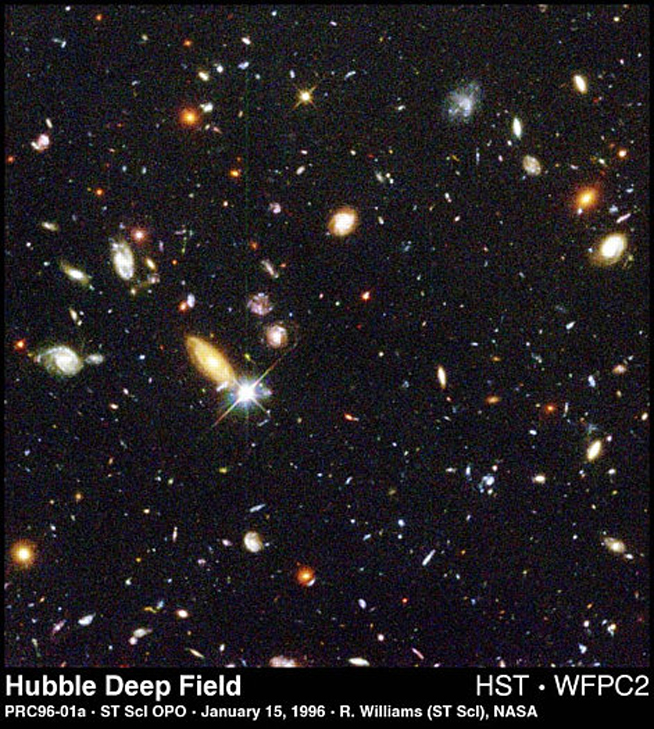Research
Galaxies
Back
| Next | Contents
| Home
We
are only beginning to have a glimpse of what an infinite universe
looks like. These are not stars, they are GALAXIES. (Editor's
note)

Hubble's
deepest-ever view of the Universe shows a myriad of galaxies and
stretches back to the beginning of time.
Several hundred never before seen galaxies are visible in this
"deepest-ever" view of the universe, called the Hubble
Deep Field (HDF), made with NASA's Hubble Space Telescope. Besides
the classical spiral and elliptical shaped galaxies, there is
a bewildering variety of other galaxy shapes and colors that are
important clues to understanding the evolution of the universe.
Some of the galaxies may have formed less that one billion years
after the Big Bang.
Representing a narrow "keyhole" view all the way to
the visible horizon of the universe, the HDF image covers a speck
of sky 1/30th the diameter of the full Moon (about 25% of the
entire HDF is shown here). This is so narrow, just a few foreground
stars in our Milky Way galaxy are visible and are vastly outnumbered
by the menagerie of far more distant galaxies, some nearly as
faint as 30th magnitude, or nearly four billion times fainter
than the limits of human vision. (The relatively bright object
with diffraction spikes just left of center may be a 20th magnitude
star.) Though the field is a very small sample of sky area it
is considered representative of the typical distribution of galaxies
in space because the universe, statistically, looks the same in
all directions.
This material was presented to the 187th meeting of the American
Astronomical Society in San Antonio, Texas on January 15, 1996.
Credit: Robert Williams and the Hubble Deep Field Team (STScI)
and NASA
Back
| Next | Contents
| Home
